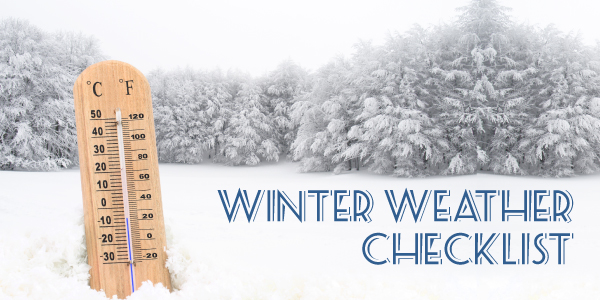So another glorious summer is over, and what do we have to look forward to now? Just imagine it: 10-degree temperatures, icy slush to drive on, and cold, drafty breezes inside our homes. If that excites you, you’re living in the right area, and you’re in the right month. If the whole idea sends a chill down your spine, you’re in good company.
While most of us can’t do anything about the icy slush or the outside temps, we do have a good deal of control over how warm our homes can feel. The following list of tips provides some ideas on getting your home winter ready. Surprisingly, a few dollars spent upfront not only saves money all winter but makes us warmer as well. It’s kind of like having your warmth and your wallet, too.
Roofs
Most of us would prefer to ignore our roof and hope it keeps taking care of us. Shingles can look OK from the ground but can be cracked, curled, and wind damaged when you get a closer look. And when there is a problem, you can’t fix it in the winter. That foot of snow that will be on your roof in January? Well, that will pretty much prevent any attempts at stopping the mold momentum that will be growing with each passing January hour.
If you can safely inspect your roof yourself, please feel free. If not, hire a home inspector or roofer that you trust. This is one of those items that meet the $10/$10,000 rule: a few dollars spent now can save you a bundle later this winter.
Rain Gutters
Many of us are quite unaware that rain gutters perform a vital purpose. Their job is to capture all that water from the roof and run it well away from the structure — especially the window wells. If your gutters are full of leaves, pine needles, kite string, and tennis balls, then water that doesn’t drain stays right there and freezes leaves you with a problem: an 800 lb. ice cube tray lurking over your head. And it’s just waiting for that perfect moment to fall.
Even worse: when your gutters don’t drain, you get water that drains where it shouldn’t. Now you have water into your window wells and mold in your manor. As a bonus, wet basements are an awesome way to introduce termites into your living space. To prevent all of the above, make sure your gutters are clean, drain toward the down spout, and drain tube at the end of the spout to run water well away from the foundation.
Seals
Nobody loves that waft of cold air flowing through your home in the middle of winter. Where does it come from? The usual suspects are the doors and windows, but it can come through electrical plugs and other openings on the exterior. There are solutions for all of the above, but the easiest and cheapest fix will be the weather stripping and door sweeps at your front and back doors. If you close your door and see daylight around the edges, then you have work to do. Don’t wait until you’re doing this project with the door open in 10-degree weather.
Hose Bibs
Ah, the lowly hose bib. Home inspectors will routinely see where homeowners leave a hose bib attached to something. One thing is pretty much certain: If you leave your hose on the hose bib all winter, you’ll have frozen pipes in the winter and broken pipes in the spring. When that valve is turned next March, you’ll find you’re the proud new owner of a swimming pool in your basement. The rot, mold, and termites will be soon to follow.
To avoid this, get all attachments off your hose bibs — now. Make sure that your hose bib is securely attached to the structure so you can’t pull the hose out of the house. It only takes two screws to do this right, but the absence of those two screws can mean the $10,000 fix is heading your way.
Heating and Cooling Systems
To be able to take care of you safely, your furnace needs to see some love. Get a good filter, and then make sure it goes where it actually filters the incoming air to your furnace. Take a look at where the air comes in and make sure your filter won’t lean, fall, or lift improperly when the air flow happens. Next, take a look at your furnace. If it looks like the place where all the dust on earth comes to die, you might have a problem. Get your furnace serviced regularly.
If you have a swamp cooler, you have some tasks to do. First, start saving — central air is better in 1,000 ways. Until then, make sure that the pan is drained, the supply line is drained, the supply valve is off, and the supply line is disconnected. Next, please make sure the unit is protected against drafting cold air into your home, the power is off, and for good measure, take out the motor and bring it in. Or roll the whole thing off the roof.

